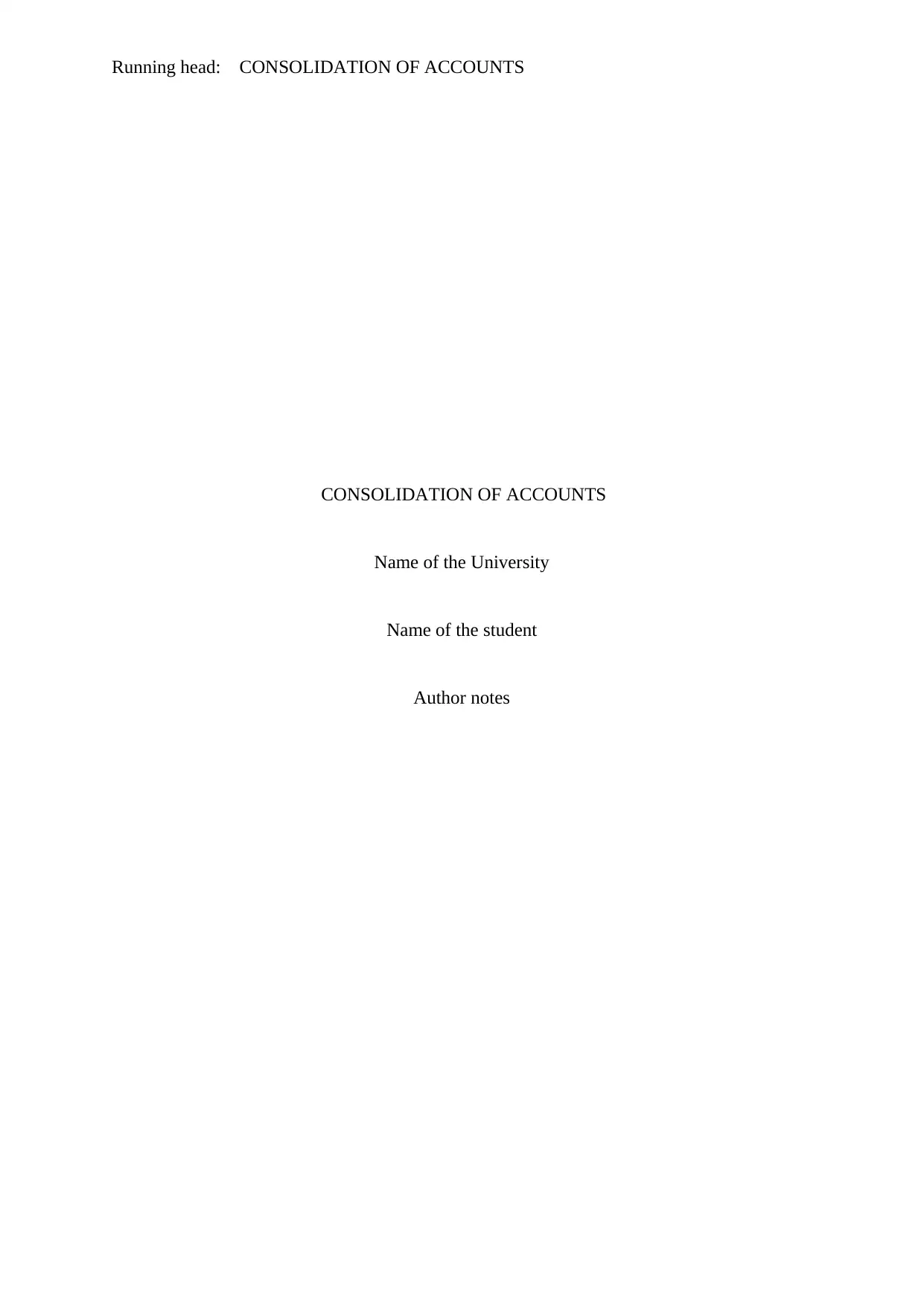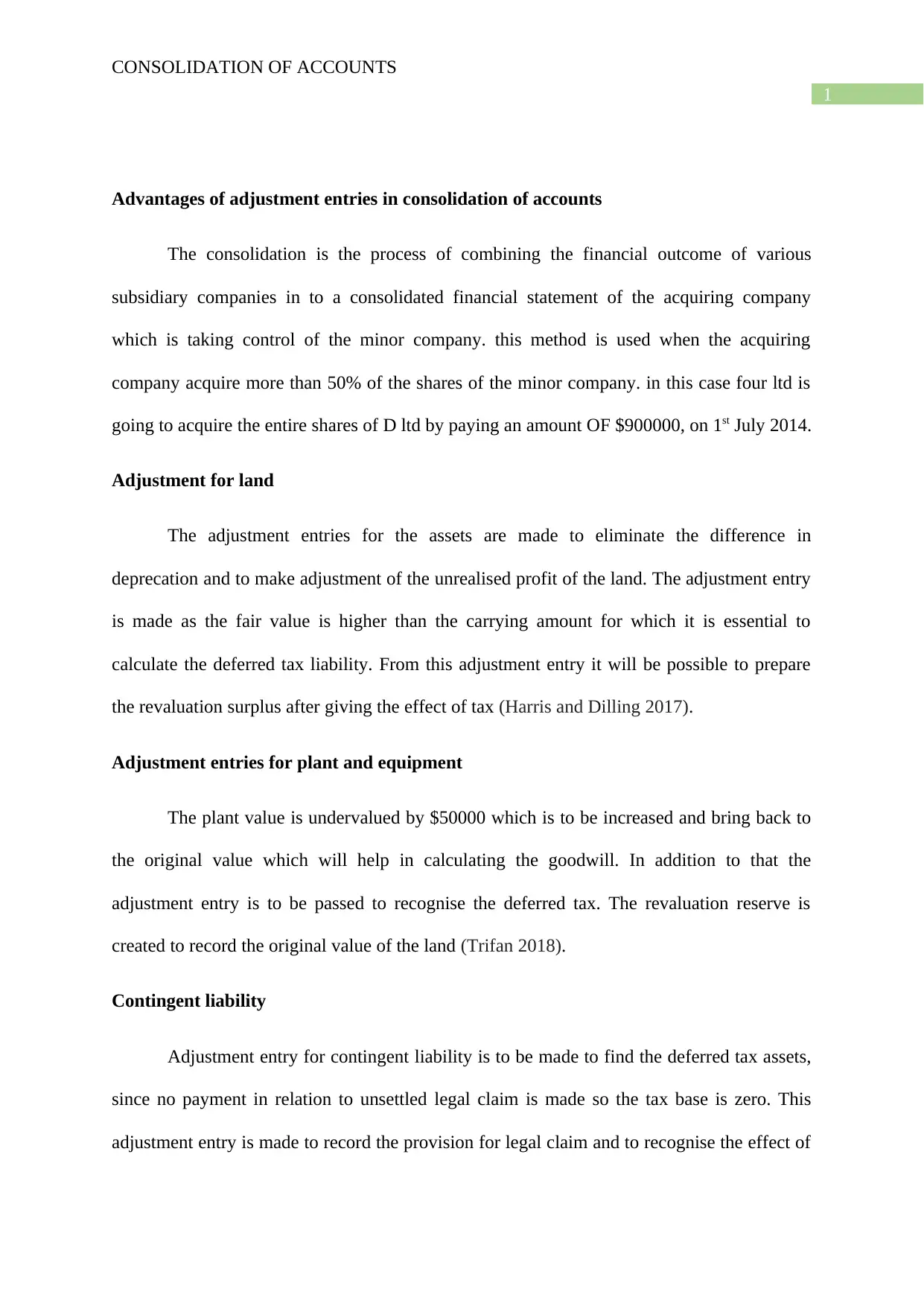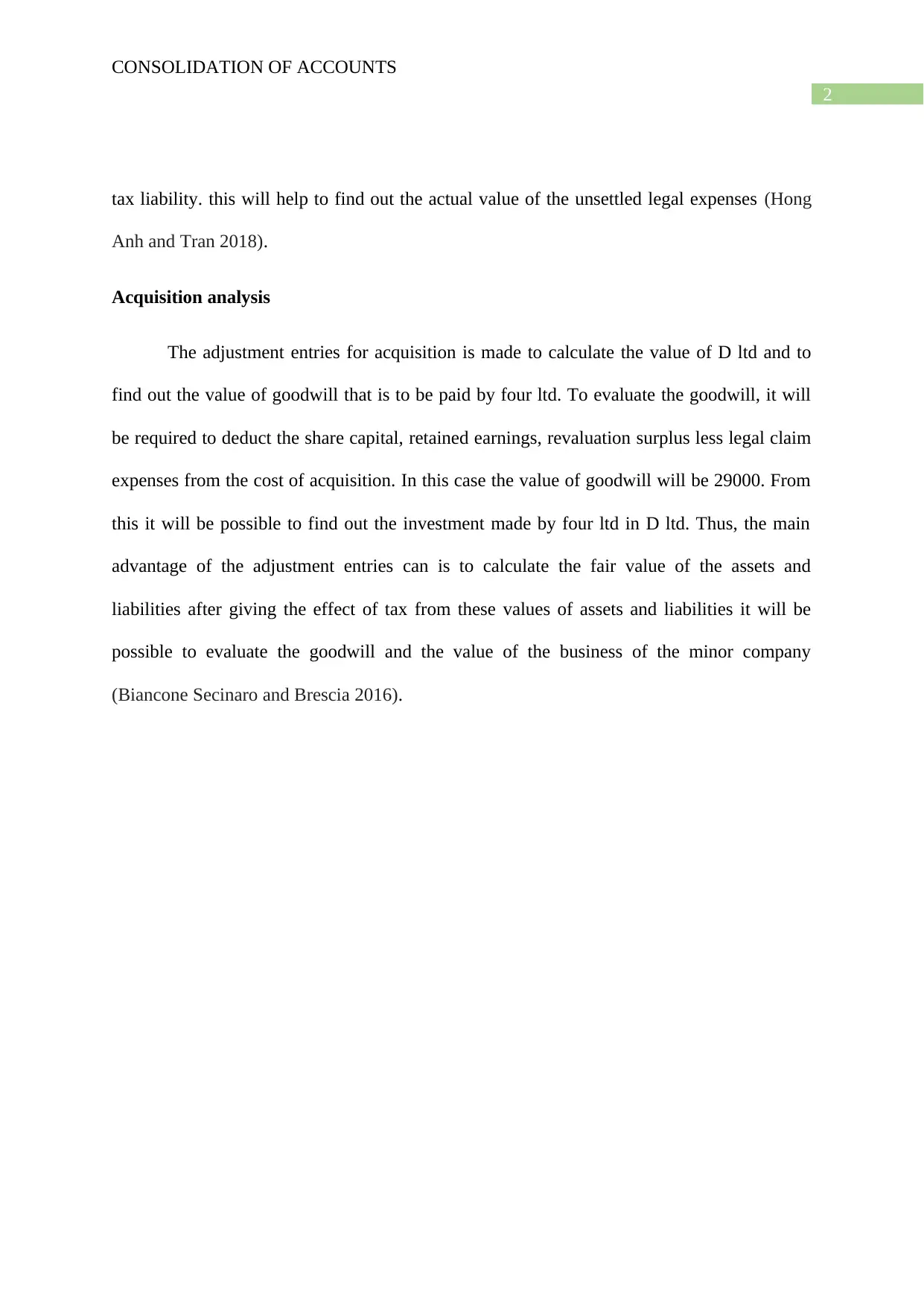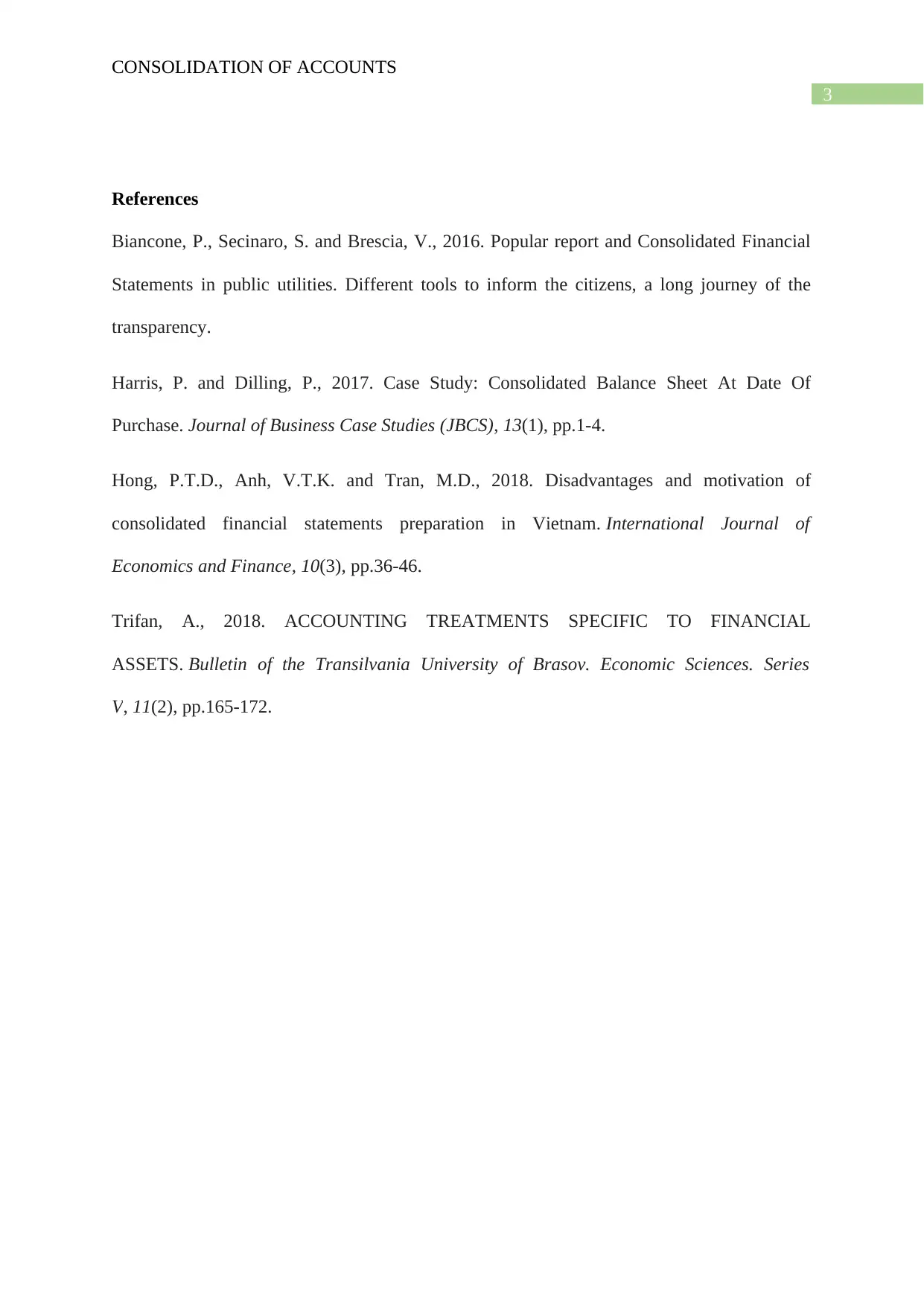Consolidation of Accounts Report: Finance Module - University Name
VerifiedAdded on 2022/08/10
|4
|646
|319
Report
AI Summary
This report provides a comprehensive analysis of the consolidation of accounts, focusing on the advantages of adjustment entries in financial reporting. It covers key aspects such as the consolidation process, the acquisition of a subsidiary, and the calculation of goodwill. The report delves into specific adjustment entries for land, plant and equipment, and contingent liabilities, emphasizing the importance of fair value determination and deferred tax implications. It examines how adjustment entries impact the balance sheet and overall financial statements, providing a detailed understanding of the process. The report highlights the significance of acquisition analysis in determining the value of the subsidiary and the investment made by the acquiring company. It concludes by summarizing the key benefits of using adjustment entries to accurately represent the financial position of the consolidated entity, including improved accuracy in financial reporting and valuation.
1 out of 4











![[object Object]](/_next/static/media/star-bottom.7253800d.svg)